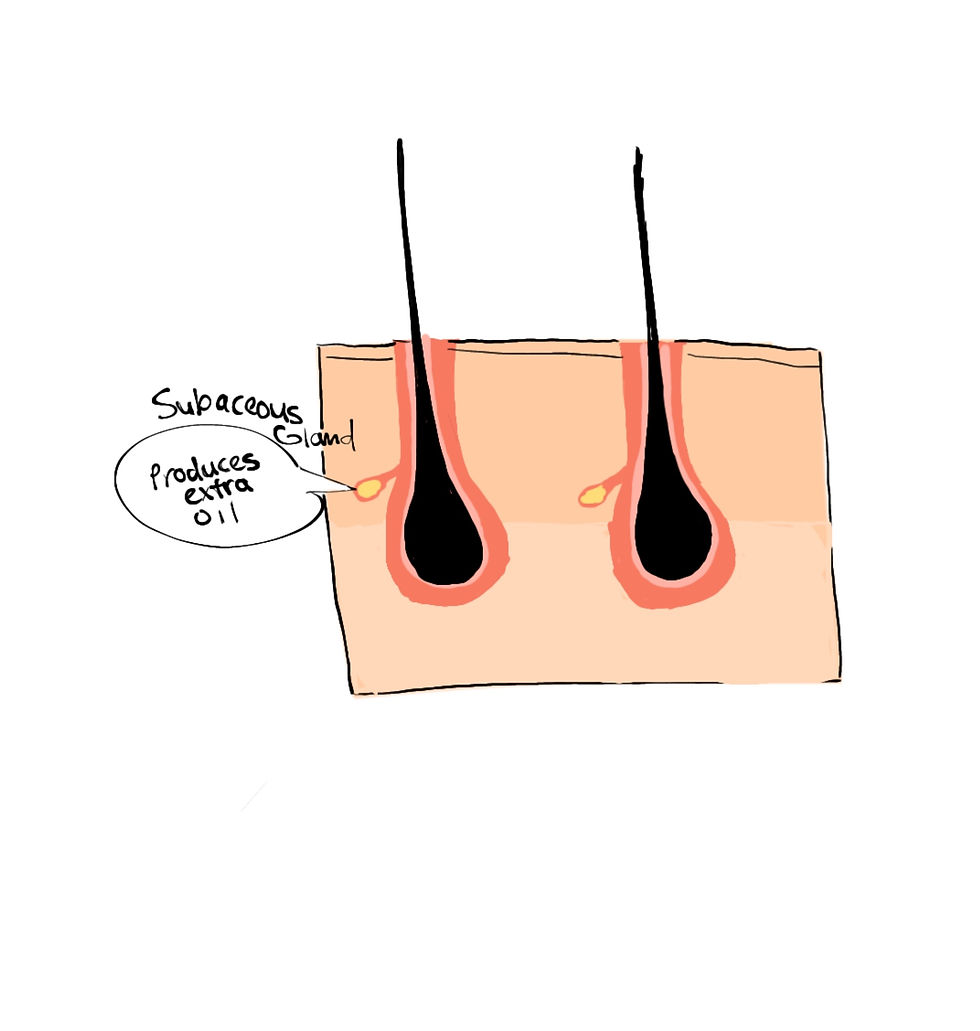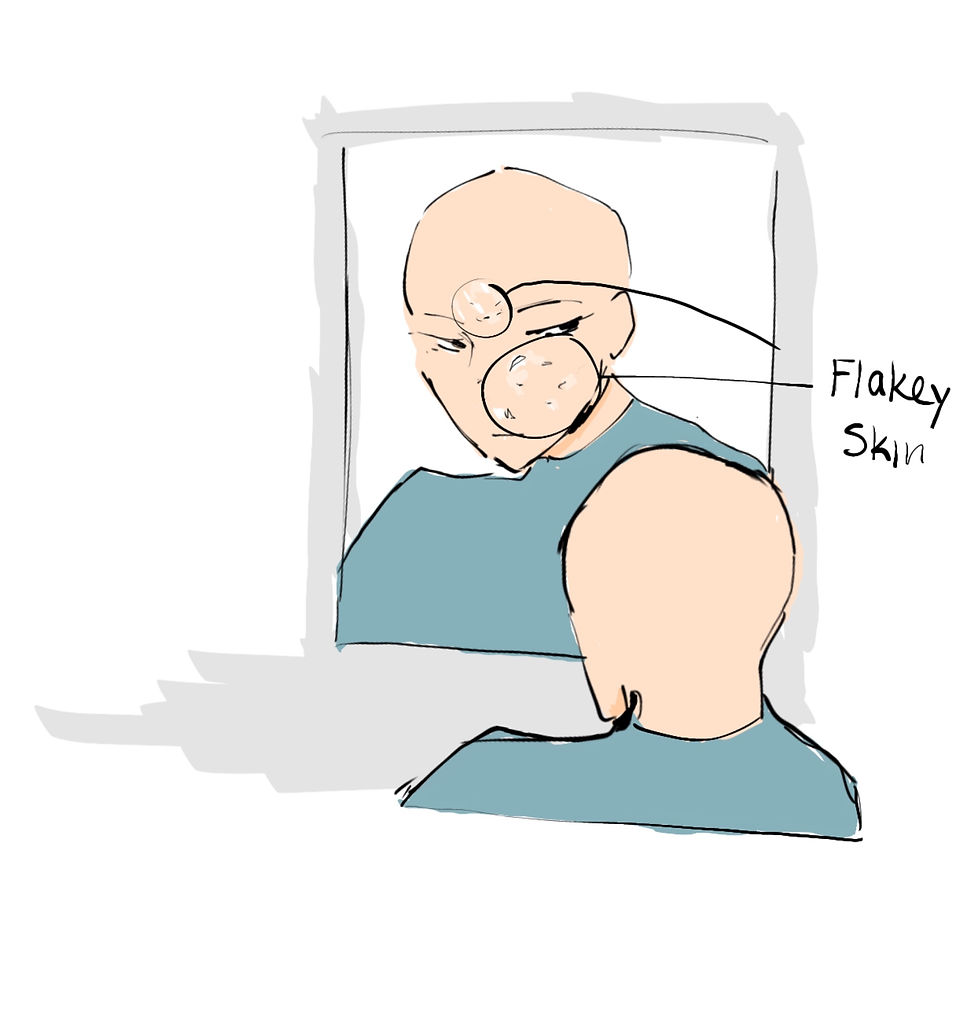How to Identify Your Skin Type
- Science Holic
- Aug 6
- 3 min read
Author: Shuhan Yu
Editor: Jonathan Chen
Artist: Caitland So
The skin is the outer layer that covers the human body, giving us our uniqueness. Everyone differs in skin tone, skin type, and experiences a different skin cycle time. The human skin weighs approximately 8 pounds and covers an area of around 22 square feet, which is equivalent to the size of a small bathroom. It is essential to take care of our skin to prevent skin problems, including skin cancer, contact dermatitis, and other skin conditions. Identifying skin type is the primary focus of this article, as it plays a crucial role in skin care routines.
It is crucial to find the right skin care products based on one’s skin type, as incorrect identification can lead to further skin problems, such as acne and clogged pores. The correct identification of skin type enables the selection of skin care products with specialized ingredients that target specific skin concerns, while providing a well-hydrated skin barrier. Skin type is a term used to describe how your skin typically appears and feels. Skin type can change throughout one’s life due to factors such as aging, stress, and humidity. If you're wondering, “What's my skin type?” No worries, in this article, you will learn simple ways to identify your skin type.

There are four main skin types, each with its unique characteristics, and we will explore each of them. Starting with oily skin that occurs due to an overproduction of sebum, which is the skin’s natural oil. The extra oil makes the skin appear shiny and feel greasy, especially in the T-zone area (the nose and forehead). With an oily skin type, the primary skin concern is clogged pores resulting from overproduction of oil, which can lead to blackheads and enlarged pores, as well as a higher risk of breakouts. In contrast, another common skin type is dry skin, characterized by a dull-looking face and a persistent feeling of tightness. Dry skin is the opposite of oily skin, where the skin doesn’t produce enough sebum to keep it hydrated, leading to dry, flaky skin with a rough texture. Another common skin type is combination skin, which is a combination of two or more characteristics, such as dryness and oiliness, in different areas. Standard features include an oily T-zone (forehead and nose) with a dry cheek area. With the final and most common skin type, normal skin, where the skin is well-balanced with neither excessive nor inadequate sebum production, this skin type generally has a smooth texture, small pores, and minimal skin concerns.

Now that we've gone through all the skin types and you have a basic understanding of them, how can we identify one's skin type? There are two methods to determine one's skin type: the bare face method and the blotting method. The bare face method allows you to observe how your skin reacts after cleansing. You can start by cleansing your face with a gentle cleanser, rinsing off any remaining products, and then waiting 10-15 minutes before applying any skincare products. During this time, observe your face in the mirror. If your skin appears oily, you likely have oily skin. If it appears flaky, then you have dry skin. If everything looks balanced, then you have normal skin. However, if some areas, such as the T-zone, are oily while others are dry, you likely have combination skin. Another simple method, known as the blotting method, involves pressing a clean blotting sheet onto different areas of the face and determining how much oil is absorbed. If the sheet picks up a significant amount of oil from most areas, you likely have oily skin. If you have little to no oil, you may have dry skin; if it picks up oil from your T-zone area, then you most likely have combination skin. If you see minimal oil from each part of your face, then you most likely have normal skin.

Identifying the right skin type helps with selecting the right products and specific ingredients that address particular skin concerns. It is the first and most essential step in building a perfect skincare routine. With simple tests such as the blotting and bare face method, you can easily identify your skin type and begin to care for it in a way that meets its specific needs. With the proper knowledge and approach, achieving healthier, glowing skin becomes much more attainable.
Citations:
“What Is My Skin Type? | Facts & Tips.” CeraVe, https://www.cerave.com/skin-
smarts/skincare-tips-advice/what-skin-type-do-i-have. Accessed 2 July 2025.
“What Is My Skin Type? | Skin Types Explained.” NIVEA,
https://www.nivea.co.uk/advice/skin/what-is-my-skin-type. Accessed 2 July 2025.



Comments